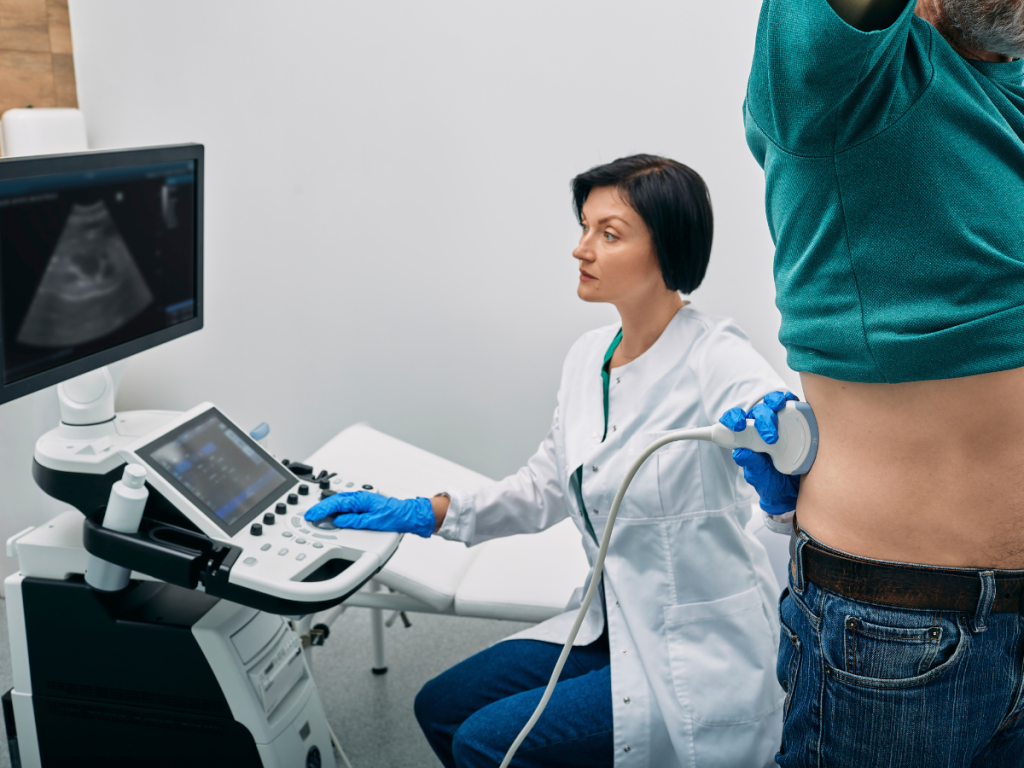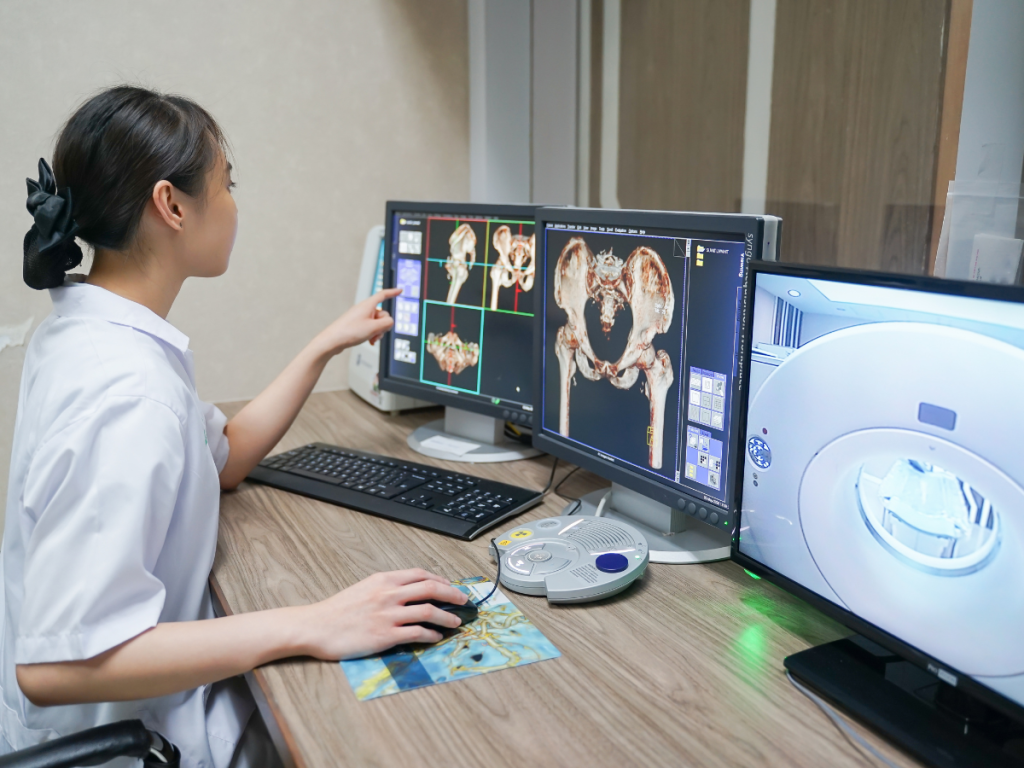How to Open a Diagnostic Imaging Center: A Comprehensive Guide
April 27, 2025
Opening a diagnostic imaging center can be a highly rewarding venture, offering essential medical services to patients in need. However, the process involves a combination of business acumen, medical expertise, and regulatory compliance. This guide provides a step-by-step breakdown of how to successfully start a diagnostic imaging center, from initial planning to day-to-day operations.
1. Understanding Diagnostic Imaging Centers
A diagnostic imaging center is a healthcare facility that uses various medical imaging technologies to diagnose and monitor diseases or conditions. The most common types of imaging modalities include:
- X-ray
- MRI (Magnetic Resonance Imaging)
- CT (Computed Tomography) Scans
- Ultrasound
- Mammography
These imaging services help healthcare providers assess and diagnose a wide array of conditions, from fractures to tumors, and are integral to modern healthcare.
Opening a diagnostic imaging center requires a thorough understanding of both the medical and business aspects. It’s essential to understand the different types of imaging technologies, their costs, and the operational needs of running such a center. Additionally, a comprehensive knowledge of healthcare regulations and insurance processes is key to running a successful facility.
2. Market Research: Understanding the Demand
Before diving into the logistics of opening your diagnostic imaging center, the first step is to conduct thorough market research. Understanding the demand in your area is critical for determining whether your center will meet the needs of the population and the healthcare providers.
Key Aspects of Market Research:
- Demographics: Understand the population size, age distribution, and common health concerns in the area.
- Local Healthcare Providers: Identify local physicians, hospitals, and clinics that may refer patients to your center.
- Competitors: Research existing diagnostic imaging centers to assess the level of competition and gaps in the market.
- Regulations: Ensure that your center can comply with local and state regulations, including health department guidelines.
By completing this phase of market research, you can make informed decisions on the types of imaging services to offer, pricing strategies, and the best location for your center.
3. Legal and Regulatory Considerations
Running a diagnostic imaging center requires compliance with various legal and regulatory requirements. These regulations ensure that you provide safe and accurate diagnostic services while protecting patient privacy. Some key steps in this area include:
Licenses and Permits
- Medical Imaging Equipment Certification: Depending on your location, you may need to obtain certification for the medical imaging equipment you plan to use. This certification ensures the equipment meets safety and accuracy standards.
- Facility Licensing: You will likely need to obtain a facility license from your state’s health department to operate as a diagnostic imaging center.
- Radiologic Technologist Licensing: Technicians operating the equipment must be properly licensed to handle medical imaging technology.
Healthcare Compliance
- HIPAA Compliance: Ensuring patient privacy and confidentiality is crucial. Your diagnostic imaging center will need to comply with the Health Insurance Portability and Accountability Act (HIPAA), which governs patient information.
- FDA Regulations: The U.S. Food and Drug Administration (FDA) regulates medical devices, including imaging equipment. Ensure your equipment complies with all FDA guidelines.
- Insurance: You’ll need appropriate medical liability insurance and general business insurance to protect your center and its patients.
Legal considerations are foundational to the operation of a diagnostic imaging center. Failing to comply with regulations can result in hefty fines and potential closure of your facility.
4. Choosing the Right Location
The location of your diagnostic imaging center plays a significant role in its success. A strategic location should offer easy access to patients, be in proximity to medical professionals, and have sufficient space to house your imaging equipment and staff.
Factors to Consider in Location Selection:
- Proximity to Healthcare Providers: Position your center near hospitals, medical offices, and specialists who can refer patients for diagnostic imaging.
- Accessibility: Ensure that your center is easily accessible to patients, with adequate parking and public transportation options.
- Demographics: Choose a location that caters to the target demographic you aim to serve, whether it’s a community with a high elderly population or one with a high concentration of healthcare professionals.
- Space and Layout: The center should have enough space for imaging rooms, administrative offices, and waiting areas. Ensure that it complies with healthcare facility space regulations.
Nextgen Diagnostics, for example, strategically chose a location that offers accessibility to both patients and healthcare providers, balancing convenience with operational efficiency.
5. Acquiring the Necessary Equipment
Investing in high-quality imaging equipment is essential for the operation of a diagnostic imaging center. The choice of equipment will depend on the types of imaging services you plan to offer, as well as your target patient demographic.
Types of Equipment to Consider:
- X-ray Machines: Used for diagnosing broken bones, dental issues, and other conditions.
- MRI Machines: Essential for soft tissue imaging, such as brain scans, joint assessments, and abdominal imaging.
- CT Scanners: Provide detailed cross-sectional images of the body, often used for detecting cancers, injuries, and internal bleeding.
- Ultrasound Machines: Used for imaging soft tissues, including during pregnancy or for organ assessments.
Cost Considerations
Medical imaging equipment can be expensive, and costs will vary depending on the type of machine and the brand. Some diagnostic imaging centers lease equipment to reduce initial capital expenditures. Alternatively, consider purchasing used or refurbished equipment if you’re working with a tighter budget.
Maintenance and Support
Regular maintenance is essential to ensure your equipment operates efficiently and safely. Establish a relationship with the equipment suppliers or third-party service providers to schedule routine checks and repairs.
6. Hiring and Training Staff
Staffing is another critical aspect of your diagnostic imaging center. You’ll need a team of trained professionals to operate the equipment, manage the facility, and provide excellent patient care.
Key Staff Positions:
- Radiologic Technologists: These professionals operate the imaging equipment. Ensure they are licensed and well-trained in the specific technologies you plan to use.
- Radiologists: Radiologists interpret the images produced by the diagnostic equipment. You may either hire in-house radiologists or partner with independent professionals on a contract basis.
- Administrative Staff: Receptionists, medical billers, and insurance coordinators will handle patient intake, billing, and insurance claims.
- Facility Management: An office manager or facility manager will oversee day-to-day operations, ensuring that everything runs smoothly.
Training and Certification
All medical staff must undergo specific training to operate diagnostic imaging equipment. Regular professional development ensures your team stays current with the latest technologies and practices. For instance, radiologic technologists must maintain ongoing certification to operate advanced imaging equipment.
7. Developing a Business Plan
A comprehensive business plan is essential for laying the foundation for your diagnostic imaging center. Your business plan should cover the following areas:
- Executive Summary: Briefly describe the business and its mission, outlining key objectives and goals.
- Market Analysis: Present findings from your market research, including demographics and the competitive landscape.
- Services Offered: List the types of imaging services you will provide and the types of patients you will serve.
- Financial Projections: Outline startup costs, ongoing expenses, and revenue projections.
- Marketing Strategy: Detail how you plan to attract patients, including digital marketing, partnerships with healthcare providers, and community outreach.
A well-thought-out business plan will not only guide your operations but also attract potential investors or lenders if needed.
8. Marketing Your Diagnostic Imaging Center
Once your diagnostic imaging center is operational, you will need a marketing strategy to attract patients and build a strong reputation in the community.
Marketing Strategies to Consider:
- Online Presence: Create a professional website that outlines your services, team, and contact information. Incorporate SEO strategies to rank high on search engines.
- Social Media: Use platforms like Facebook and Instagram to connect with patients, share success stories, and provide health tips related to diagnostic imaging.
- Referral Networks: Establish strong relationships with local healthcare providers who can refer patients to your center.
- Community Engagement: Participate in local health fairs, sponsor wellness events, and offer free screenings to introduce your services to the community.
Effective marketing will position your center as a trusted resource for diagnostic imaging and attract a steady flow of patients.
9. Financial Considerations
Starting a diagnostic imaging center involves significant initial investments. Beyond the cost of equipment and facility setup, you must also account for ongoing expenses such as salaries, maintenance, insurance, and marketing.
Funding Options:
- Bank Loans: Traditional loans can help cover startup costs.
- Investors: Consider seeking investment from healthcare-focused venture capital firms or angel investors.
- Leasing Equipment: To minimize upfront costs, consider leasing medical equipment or entering financing agreements with equipment suppliers.
Financial planning is key to ensuring that your center is not only profitable but sustainable in the long term.
10. Continuous Improvement and Growth
Once your diagnostic imaging center is established, focus on continuous improvement. Stay updated on the latest advances in imaging technologies and consider expanding your services as demand grows.
Strategies for Growth:
- Technology Upgrades: As imaging technologies evolve, periodically invest in new equipment to improve diagnostic capabilities.
- Patient Satisfaction: Focus on delivering excellent customer service and patient care to build loyalty and a positive reputation.
- Expanding Services: As your center grows, consider expanding into new imaging modalities or partnering with additional healthcare providers.
By staying committed to improvement, you can ensure the long-term success of your diagnostic imaging center. Starting a diagnostic imaging center is a challenging but rewarding venture. By carefully considering the business, legal, and medical aspects outlined in this guide, you can create a successful and profitable facility that meets the needs of your community and healthcare providers.
Nextgen Diagnostics Serving the Mahatma Gandhi District Community and Beyond in Houston
Nextgen Diagnostics is dedicated to serving the diverse needs of the local community of Houston, including individuals residing in neighborhoods like Mahatma Gandhi District. With its convenient location near landmarks such as the Benavidez Elementary School and major intersections like Gulfton St & Westward St (coordinates: 29.716324866048797, -95.49404709245827), we offer Cheap Diagnostic Imaging Centers
Houston services.
Get Cheap Diagnostic Imaging Centers Houston Services at Mahatma Gandhi District Now
Navigate from Mahatma Gandhi District to Nextgen Diagnostics Now
Frequently Asked Questions (FAQs)
1. What are the key steps involved in opening a diagnostic imaging center?
The main steps include conducting market research, choosing a strategic location, acquiring the necessary equipment, complying with regulatory requirements, hiring trained staff, and developing a solid business plan.
2. How much does it cost to start a diagnostic imaging center?
The costs can vary widely based on location, the type of imaging services offered, and the equipment purchased. On average, starting a diagnostic imaging center could cost anywhere from $500,000 to over $1 million, including equipment, licensing, and initial operational expenses.
3. What types of medical imaging equipment should I invest in?
The key equipment includes X-ray machines, MRI machines, CT scanners, ultrasound devices, and mammography equipment. The choice will depend on the services you plan to offer and the needs of your target market.
4. Do I need special certifications to operate a diagnostic imaging center?
Yes, you will need certifications and licenses for both your equipment and staff. This includes ensuring that your radiologic technologists are licensed and that your equipment complies with safety standards.
5. How can I attract patients to my diagnostic imaging center?
To attract patients, focus on building relationships with local healthcare providers for referrals, maintaining an online presence through a professional website and social media, and offering exceptional customer service to build trust and reputation.

NextGen Scan

Contact Us: We’re Here to Help!
We’d love to hear from you! Whether you have questions about our services, need more information on our diagnostic and pain management options, or would like to schedule an appointment, our friendly and professional team is here to assist you every step of the way. We are dedicated to providing you with the best care and support, and we are happy to address any concerns or inquiries you may have.







